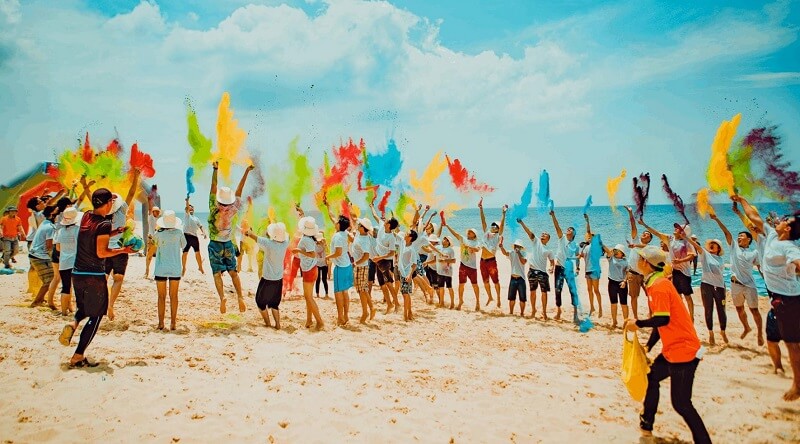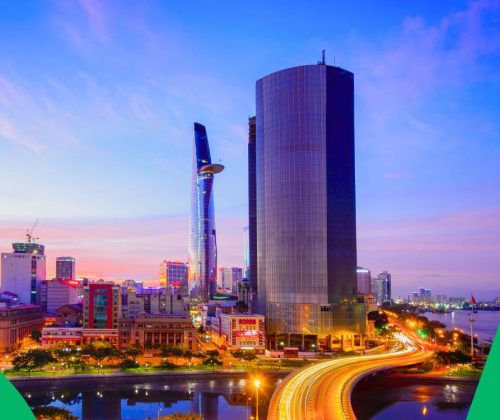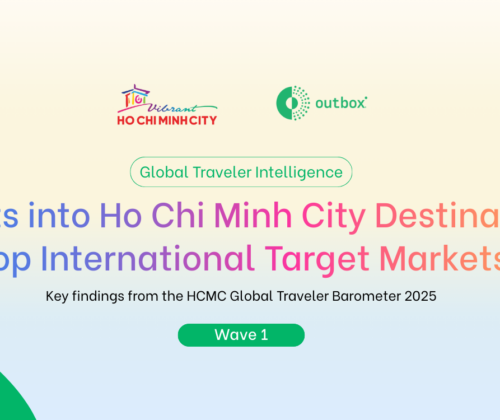Company trips are a way for businesses to show their appreciation for their employees’ hard work. They can also be a great way for employees to bond with each other and create lasting memories. According to The Outbox Company’s most recent report, “Vietnam Travel Market Tracker,” 46% of Vietnamese BTMICE travelers joined company trips in the first quarter of 2023. Travel companies might find challenges when targeting BTMICE travelers as the end-user, who is the employee in this case, is not always the same as the decision-maker, who is the organizer of the company trip, or the BTMICE trip. Even within the same group of travelers, there is a diversity of travel behaviors and values.

There are many different purposes for company trips. Some companies use them as a way to relax and de-stress after a long year of work. Others use them as an opportunity to explore new places and cultures. And still, others use them as a way to build team spirit and camaraderie.
The planning of a company trip can vary depending on the size and budget of the company. However, there are some common factors that most companies or employees consider when planning their trips. These include:
The length of the trip:
Company trips typically last for two to three days. They would usually go on Friday and come back on Sunday to take advantage of the weekend.
Accommodations:
accommodation is usually paid by the company. According to VTMT, in quarter 1/23, Vietnamese travelers who joined the company trip usually stay at 4-star hotels.
Top destinations:
According to VTMT data, 45% of Vietnamese travelers said that they usually go to a beach on their company trips. The top two destinations are Danang and Phu Quoc, which are both known for their beautiful beaches and stunning scenery. Ho Chi Minh City is the third most popular destination, as it is a vibrant city with a lot to offer in terms of culture, food, and nightlife.
The activities:
Company trips typically include a variety of activities, such as sightseeing, team building, and cultural experiences.
The budget:
The budget for a company trip will vary depending on the size of the company and the desired activities. However, as employees, they prefer to spend between 2 and 5 million VND per trip. The difference in spending might come from the generations. According to VTMT, Gen Z, the youngest generation in the company and has less disposable income, prefers to pay 2 million VND per trip. Gen Y, who has worked for a while with a more stable income, prefers to pay 5 million VND per trip.
This information is a great example of what marketers should keep in mind when spending on the same trip but different generations will act differently.
Booking channels:
Gen Z travelers may be more receptive to budget-friendly travel options, while Gen Y travelers may be more interested in splurging on travel. This also results in their behaviors of selecting the booking channels for any travel services. For Gen Z, the top 3 main factors influencing the choices are cost, reliability with clearly provided service information, convenience and easy-to-find information. For Gen Y, although the factors are similar the order of priority is different. Gen Y prefers to book a service as its reliable with clearly provided service information, convenience and easy-to-find information, and lastly the cost of the service.
Even in the same group of travelers, people still act differently. This is because people have different personal values, budgets, travel experiences, and travel goals. As a result, they will have different preferences when it comes to travel. This means that it is important for travel businesses to monitor and track the behavior of their target audience, and not assume one approach strategy can win all target groups.



